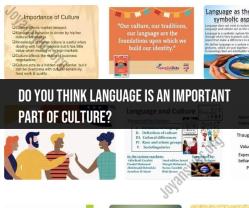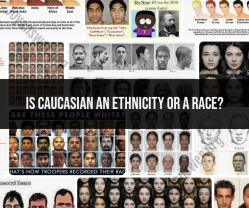What are some examples of cultural stereotypes?
Cultural stereotypes are often based on oversimplified beliefs or assumptions about people from specific cultures or ethnic backgrounds. It's important to note that these stereotypes are inaccurate, unfair, and can perpetuate bias and discrimination. Here are some examples of cultural stereotypes:
Asian Stereotypes:
- The "Model Minority" Stereotype: This stereotype portrays all Asians as high-achieving, academically successful, and disciplined. It can create unrealistic expectations and overlook the diversity of experiences within Asian communities.
- Perceptions of Asian Women: Stereotypes about Asian women often portray them as submissive, exotic, or overly traditional. These stereotypes are objectifying and degrading.
Black Stereotypes:
- Criminal Stereotype: Black individuals are unfairly associated with criminality or violence. This stereotype has led to racial profiling and systemic bias within the criminal justice system.
- Athletic Stereotype: The assumption that all Black people are naturally athletic or excel in sports can be limiting and overlooks individual talents and interests.
Latino Stereotypes:
- Immigration Stereotype: Latino individuals are often stereotyped as undocumented immigrants, even if they are citizens or legal residents. This stereotype can lead to discrimination and hostility.
- Labor Stereotype: Some perceive Latinos as primarily working in low-wage jobs or manual labor, ignoring the diversity of professions within the Latino community.
Native American Stereotypes:
- "Savage" Stereotype: Historically, Native Americans were often depicted as savage or uncivilized in media and literature. Such stereotypes are offensive and perpetuate harmful narratives.
- "Casino" Stereotype: Associating all Native Americans with casinos and gambling is a misrepresentation and disregards their rich cultural heritage.
Muslim Stereotypes:
- Terrorism Stereotype: Muslims are sometimes unfairly associated with terrorism or violence. This stereotype is not only harmful but also contributes to Islamophobia.
- Dress Stereotype: Assuming that all Muslim women wear the hijab or niqab is incorrect, as Muslim women's clothing choices vary widely.
Jewish Stereotypes:
- Financial Stereotype: The stereotype of Jews being overly wealthy or controlling the economy is a harmful and baseless assumption.
- Negative Stereotypes in Media: Jews have historically been portrayed negatively in media, reinforcing stereotypes.
European Stereotypes:
- Cultural Stereotypes: Making assumptions about the cultures and behaviors of different European countries can lead to inaccurate generalizations and misunderstandings.
Hispanic Stereotypes:
- Language Stereotype: Assuming that all Hispanics speak Spanish or are recent immigrants ignores the diversity of languages and backgrounds within the Hispanic community.
- Gang Stereotype: Associating Hispanic individuals with gangs or criminal activity is stigmatizing and unjust.
Middle Eastern Stereotypes:
- Terrorist Stereotype: The unjust stereotype linking Middle Eastern individuals to terrorism has led to discrimination and prejudice.
- Religious Stereotypes: Making assumptions about the religiosity or practices of Middle Eastern people is misleading.
Gender Stereotypes in Different Cultures:
- Expectations about gender roles and behaviors can vary among cultures, and stereotypes can arise from these differences. For example, traditional gender roles may lead to stereotypes about women's domesticity or men's dominance.
It's important to remember that these stereotypes do not accurately represent the individuals or cultures they target. They can perpetuate bias, discrimination, and misunderstanding. Promoting cultural awareness, diversity, and inclusivity is essential in challenging and dismantling these harmful stereotypes.










